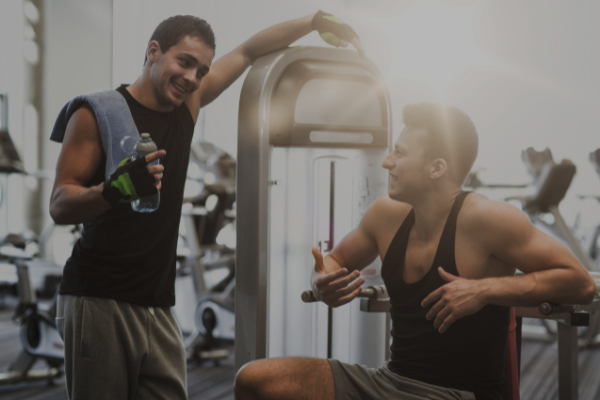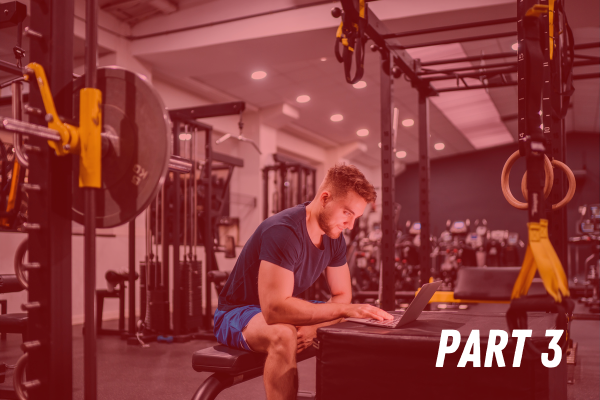Introduction
Deadlifts are a pretty common exercise in both bodybuilding and sport strength and conditioning programs. Heck, they make up 1/3 of the events in powerlifting and are occasionally an event in many strongman competitions. Deadlifts are often hailed as the king of all exercises since they activate a wide variety of muscle groups and elicit a feeling of masculinity rivaled by few things on this planet.
However, a growing camp of coaches and recreational lifters alike claim that deadlifts are simply too dangerous to be worth their weight in a training program (good pun, huh?). Does the research support this claim? Is there more than meets the eye here? Let’s check it out.
What Does the Research Say?
First, it’s important to note that research does support the use of the deadlift in both athletic programming (12) and even lower back pain rehab settings (4). However, we pretty much knew these things already, so let’s get into the nitty gritty of what the research has to say about deadlifts and injuries.
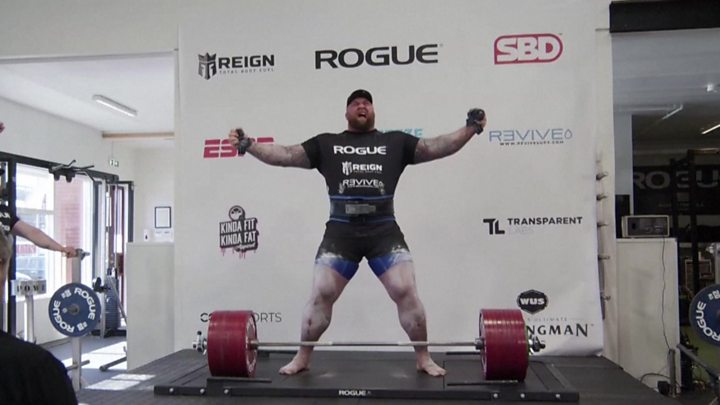 The majority of studies that examine injury rates in strength sports are going to be some sort of observational, narrative, or retrospective investigation. These often involve the researchers finding a population of lifters through things like social media, advertisements, or seminars at local gyms. These lifters will then fill out questionnaires that ask about various injuries, their causes, and how much time they forced the lifter to take off from the gym. Just about every study cited in this article defines an injury as some sort of acute or chronic pain that forces the lifter to miss “x” amount of training sessions. Not every injury has to be diagnosed, per say, but as you’ll see, there’s quite the strong trend in these studies.
The majority of studies that examine injury rates in strength sports are going to be some sort of observational, narrative, or retrospective investigation. These often involve the researchers finding a population of lifters through things like social media, advertisements, or seminars at local gyms. These lifters will then fill out questionnaires that ask about various injuries, their causes, and how much time they forced the lifter to take off from the gym. Just about every study cited in this article defines an injury as some sort of acute or chronic pain that forces the lifter to miss “x” amount of training sessions. Not every injury has to be diagnosed, per say, but as you’ll see, there’s quite the strong trend in these studies.
We primarily looked into reports on injuries in powerlifting, since the deadlift is such a large portion of powerlifting training and competition. As we suspected, the bench press was the most common injurious exercise in powerlifters (3,11) and the shoulder is the most common injury site in these athletes (6,7,8,10). Deadlifts typically caused more injuries than squats in powerlifters (11), but lower back injuries are almost always the second most common injury site in powerlifters with both deadlifts and squats being the culprit.
As we move to other strength sports, though, we start to see more interesting findings. One review actually reported a greater incidence of lower back injuries in Olympic weightlifters compared to powerlifters (1). The deadlift is not a competitive lift in Olympic weightlifter, but it’s certainly possible that weightlifters could use deadlift variations as assistance movements. However, Olympic lift variations were mostly to blame for these lower back injuries in weightlifters.
One study that assessed 117 CrossFitters found that CrossFit athletes were injured from squats more often than deadlifts (9). This might just be a harbinger of squatting movements being more prevalent in CrossFit than deadlift variations, but it’s definitely an interesting point that clashes with the findings in powerlifting athletes.
In addition, an examination of strongman athletes found that the deadlift was the most common injurious injury in this population (13). However, a closer look at the data reveals that deadlifts above 90% 1RM were mostly to blame for this finding, so that doesn’t perfectly translate to most people who aren’t maxing on deadlifts very often. Strongman training can also be incredibly taxing/fatiguing which presents a pretty suboptimal environment for heavy pulls. This could certainly play into the injuries experienced from deadlifting, but that’s deeper than the data goes on the matter.
Lastly, one study on powerlifters found that powerlifters with poor dietary habits or greater alcohol intakes may be more likely to experience general injuries from training (11). While this doesn’t perfectly isolate deadlifts, it’s an interesting note to all of us that eat like dump trucks and reserve our Saturdays for the boys. If you’re training hard and partying hard, you might be more likely to get some sort of injury – whether it’s from deadlifting or jumping on beer pong tables remains to be decided.
So, what conclusions can we make from research? It appears that the deadlift is definitely a perpetrator for some injuries in strength sports. However, the bench press has a much longer rap sheet when it comes to causing injuries. With these things in mind, how does the data stack up to real life?
Anecdotal Observations
Anecdotes certainly aren’t a very effective form of scientific communication, but in cases like this where we don’t have much data, they can be useful and can drive future investigations. Myself and Dr. Wilson have spent more than three decades combined in the iron game and we’ve observed a thing or two in the gym.
I’ve coached hundreds of athletes and clients, all the way from 7-year-olds with special needs, to NFL veterans, and even to 85-year-old billionaires. I have made every single one of these clients perform deadlifts. And I’ve never had a single deadlift injury happen. Why is this the case?
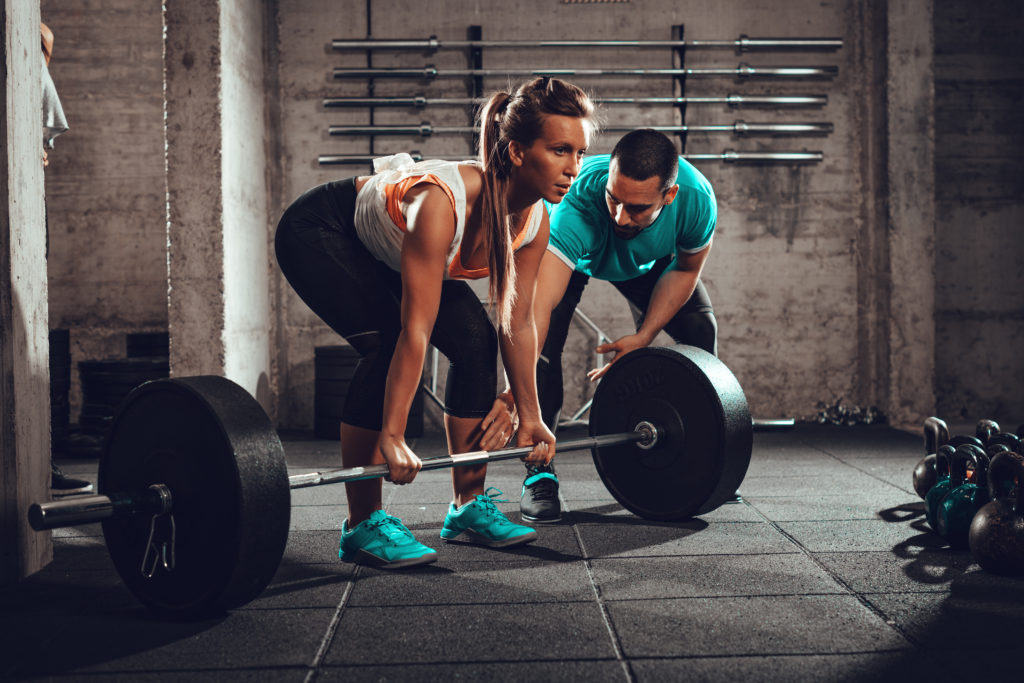 The main thing I’ve noticed with coaches who are concerned about deadlift safety is that they often suck at deadlifting. Therefore, they suck at teaching the deadlift. And if you’re not confident on how to teach or coach a movement, you’re not going to program it. And that’s perfectly fine, you should never program an exercise you’re not comfortable with teaching. But that’s no reason to claim that you avoid prescribing deadlifts because “they’re dangerous.”
The main thing I’ve noticed with coaches who are concerned about deadlift safety is that they often suck at deadlifting. Therefore, they suck at teaching the deadlift. And if you’re not confident on how to teach or coach a movement, you’re not going to program it. And that’s perfectly fine, you should never program an exercise you’re not comfortable with teaching. But that’s no reason to claim that you avoid prescribing deadlifts because “they’re dangerous.”
When it comes to training/coaching, the deadlift is literally the easiest movement to teach. Keep your feet about hip width apart, hinge at the hip, and keep your chest up throughout the lift. That’s it. The deadlift in one sentence. You can’t coach the squat or bench press in one sentence, that’s for sure. Now, certainly as you get more advanced, the deadlift becomes more nuanced. But for someone starting a lifting journey, keeping things simple is incredibly important – and the deadlift can be as simple as exercises get. When it comes to teaching people how to lift, you can easily get someone to have pretty decent deadlift form in about 2-minutes. That’s never the case with squats or bench press.
Unfortunately, the unfamiliarity with deadlifting in both coaches and athletes has spurned a misunderstanding in the fitness community about this beautiful lift. It’s quite common to also hear people rag on bench press for causing shoulder issues, but that’s pretty warranted given both the research findings and anecdotal observations of many coaches. I’ve torn a pec twice, torn both labrums, and have even frayed a biceps tendon from bench pressing. I’ve seen several pec tears during powerlifting competitions and training. I’ve had training partners deal with crippling shoulder pain from bench training. Never once have I seen someone get hurt deadlifting in competition/training or complain about chronic pain from deadlifting. I think we can all agree that the bench press sucks.
One thing that differentiates deadlifts from other exercises (and contributes to coach and lifter fears) is the fact that you can perform a deadlift with absolute dumpster fire form and still successfully complete the lift. Think about it this way – if you’re maxing on a back squat and your spine begins to flex, you get folded up like a lawn chair pretty quickly. You just can’t fight through that position in a squat. However, a the weight in a deadlift will have a little less mechanical advantage over your thoracic spine. Therefore, you can flex your spine quite a bit and still complete the lift – cue the classic Halloween cat deadlift position.
Advanced lifters use a version of this technique pretty often during the deadlift as it can reduce hip extensor needs and effectively lengthens your arms, making the lift a little shorter. However, when weak and/or inexperienced people try it, bad things can happen. If you don’t have the back and core strength to support your spine in this position, you might not want to emulate your favorite professional powerlifter.
How Can You Make Deadlifts Safer?
When it comes to making deadlifts safer, the main point is to improve your deadlift form in general. What’s the best way to do this? Stiff leg deadlifts are my personal favorite go-to. I actually usually teach these before normal deadlifts since they simplify the exercise even more. Stiff leg deadlifts force you to keep your core tight, back flat, and chest proud throughout the lift. They discourage any spine rounding since your starting position doesn’t involve having to squat down while reaching for the bar that’s in front of you – just push your hips back, grab the bar, and rock n’ roll, cowboy. People will also naturally take this lift slower which is great in the beginning. Oftentimes when you teach someone to deadlift, they try ripping the weight off the floor right away. Put them in a stiff leg position and they’ll be much more controlled. Get strong on stiff leg deadlifts and you’ll never have an issue with normal deadlifts, I promise you.
In addition to stiff leg deadlifts, all kinds of back work can also help. Your back strength is often going to be a limiting factor in deadlift performance/safety as your back muscles (lats, mainly) dictate how close the bar stays to your hips throughout the lift. If the bar strays further away from your hips, the lift will likely be lost and you’ll be at a greater injury risk. Therefore, strengthen your lats and traps with rows and pulldowns until the cows come home. Then deadlift the cows.
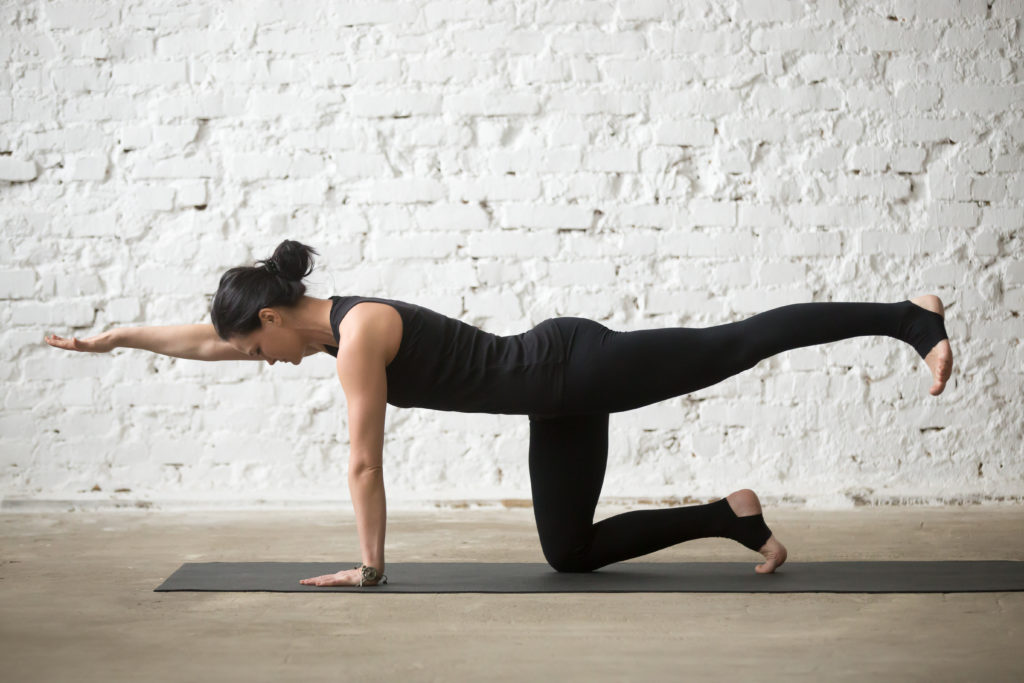 After you start focusing on strengthening your back in general, add some core training as your core is also responsible for stabilizing your spine during the deadlift. Now, this isn’t just crunches or sit-ups. Do real core work. If the motion you’re trying to avoid is spine flexion, perform some spine anti-flexion exercises. Bird dogs, planks, front squats, and even back extensions can all help. In addition, add some anti-extension work in, too, to ensure that your spine is strong from both sides. This includes things like dead bugs, ab rollouts, etc. A bulletproof back and core are exactly what the doctor orders when you want to deadlift your neighbor’s house (safely).
After you start focusing on strengthening your back in general, add some core training as your core is also responsible for stabilizing your spine during the deadlift. Now, this isn’t just crunches or sit-ups. Do real core work. If the motion you’re trying to avoid is spine flexion, perform some spine anti-flexion exercises. Bird dogs, planks, front squats, and even back extensions can all help. In addition, add some anti-extension work in, too, to ensure that your spine is strong from both sides. This includes things like dead bugs, ab rollouts, etc. A bulletproof back and core are exactly what the doctor orders when you want to deadlift your neighbor’s house (safely).
Now, what if you have some pre-existing back pain but still want to deadlift? Luckily, trap bar deadlifts seem to be pretty pain-free for individuals with low back injuries (5). In addition, sumo deadlifts also have less mechanical difficulty at the spine when compared to conventional deadlifts (2,10). When training athletes or clients, I have used both of these options to continue making progress on either strength or size gains. When I was working in the collegiate sector, I coached a swim and dive team – lower back pain was an extremely common complaint following rigorous swimming practices. Sumo deadlifts were an excellent option for those struggling with low back tightness. There’s a deadlift for every population, you just have to get creative with equipment and loading patterns and you also have to know how to effectively coach people through the movement.
Conclusion
If you’re still concerned about deadlifting safety, I’d suggest really taking the time to learn more about how to deadlift. Video your own form. Meet with a qualified powerlifting coach who can guide you in the right direction. Any exercise can cause injury when done wrong, and the deadlift might present a greater threat since you can use quite a bit more weight on deadlifts than many other exercises. But don’t call deadlifts dangerous because you’re not confident in how to properly perform them. That’s just character assassination of the exercise.
If you know what you’re doing and have decent lifting form, deadlifts are going to be perfectly safe and can be a useful tool in your exercise arsenal.
References
- Aasa, U., Svartholm, I., Andersson, F., & Berglund, L. (2017). Injuries among weightlifters and powerlifters: a systematic review. British Journal of Sports Medicine, 51(4), 211-219.
- Belcher, D. (2017). The Sumo Deadlift. Strength & Conditioning Journal, 39(4), 97-104.
- Bengtsson, V., Berglund, L., & Aasa, U. (2018). Narrative review of injuries in powerlifting with special reference to their association to the squat, bench press and deadlift. BMJ Open Sport & Exercise Medicine, 4(1), e000382.
- Berglund, L., Aasa, B., Hellqvist, J., Michaelson, P., & Aasa, U. (2015). Which patients with low back pain benefit from deadlift training? The Journal of Strength & Conditioning Research, 29(7), 1803-1811.
- Buckman, C. (2019). High-Handle Hexagonal Barbell Deadlift 1RM Differences Between Collegiate Female Athletes with and without Low Back Pain or Injury (Doctoral dissertation, University of Central Arkansas).
- Keogh, J., Hume, P. A., & Pearson, S. (2006). Retrospective injury epidemiology of one hundred one competitive Oceania power lifters: the effects of age, body mass, competitive standard, and gender. Journal of Strength and Conditioning research, 20(3), 672.
- Keogh, J., Pearson, P. H. S., & Hume, P. (2003). Epidemiology of injury in powerlifting: retrospective results. The Journal of Strength & Conditioning Research, 6(4 Supplement 1), 44-44.
- Keogh, J. W., & Winwood, P. W. (2017). The epidemiology of injuries across the weight-training sports. Sports Medicine, 47(3), 479-501.
- Moran, S., Booker, H., Staines, J., & Williams, S. (2017). Rates and risk factors of injury in CrossFit: a prospective cohort study. J Sports Med Phys Fitness, 57(9), 1147-1153.
- Siewe, J., Rudat, J., Röllinghoff, M., Schlegel, U. J., Eysel, P., & Michael, J. P. (2011). Injuries and overuse syndromes in powerlifting. International Journal of Sports Medicine, 32(09), 703-711.
- Strömbäck, E., Aasa, U., Gilenstam, K., & Berglund, L. (2018). Prevalence and consequences of injuries in powerlifting: A cross-sectional study. Orthopaedic Journal of Sports Medicine, 6(5).
- Thompson, B. J., Stock, M. S., Shields, J. E., Luera, M. J., Munayer, I. K., Mota, J. A., … & Olinghouse, K. D. (2015). Barbell deadlift training increases the rate of torque development and vertical jump performance in novices. The Journal of Strength & Conditioning Research, 29(1), 1-10.
- Winwood, P. W., Hume, P. A., Cronin, J. B., & Keogh, J. W. (2014). Retrospective injury epidemiology of strongman athletes. The Journal of Strength & Conditioning Research, 28(1), 28-42.
From being a mediocre athlete, to professional powerlifter and strength coach, and now to researcher and writer, Charlie combines education and experience in the effort to help Bridge the Gap Between Science and Application. Charlie performs double duty by being the Content Manager for The Muscle PhD as well as the Director of Human Performance at the Applied Science and Performance Institute in Tampa, FL. To appease the nerds, Charlie is a PhD candidate in Human Performance with a master’s degree in Kinesiology and a bachelor’s degree in Exercise Science. For more alphabet soup, Charlie is also a Certified Strength and Conditioning Specialist (CSCS), an ACSM-certified Exercise Physiologist (ACSM-EP), and a USA Weightlifting-certified performance coach (USAW).





